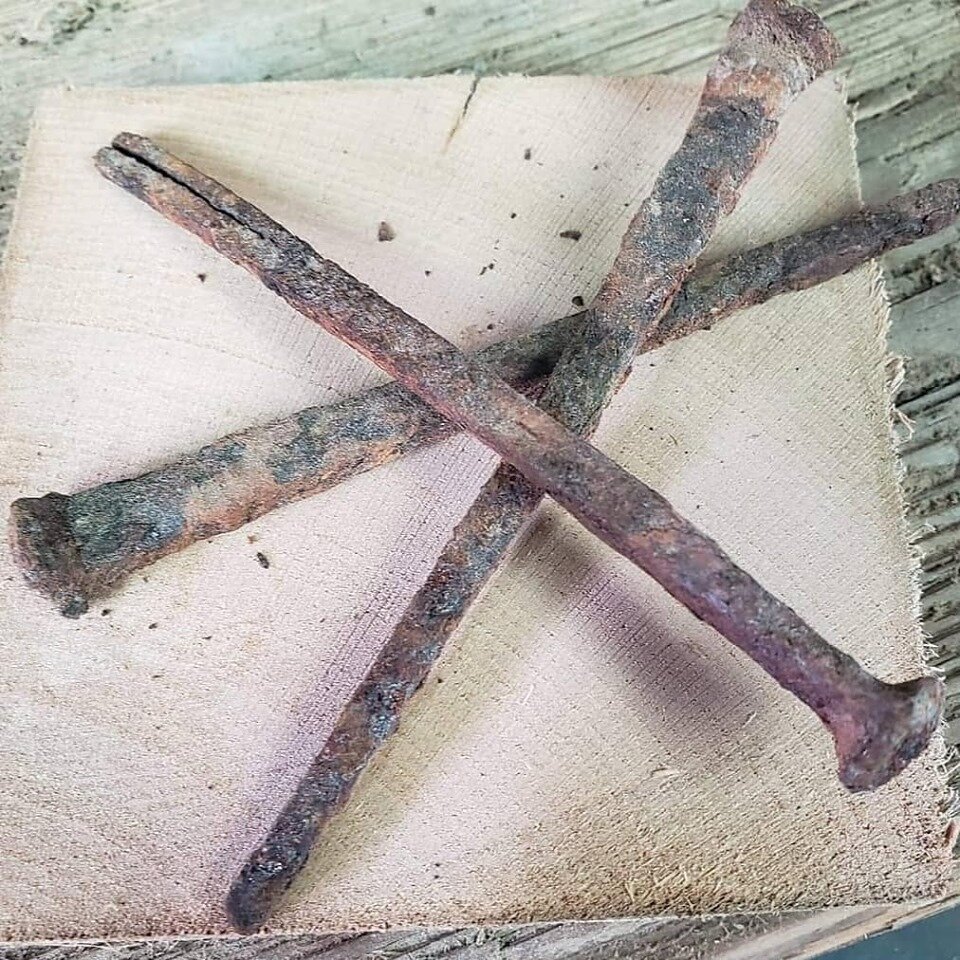Tip Tuesday-Nails
Today on Tip Tuesday we are going to discuss how to tell the age of a barn by the nails that are used.
Most everyone knows that handmade nails are older than machine-made nails. There are a few ways to identify the age of nails. The earliest forged nails are identified by their irregular shank and hammer marks on both shank and head. The first nails came into use at the beginning of the Bronze Age (1800BC). By the early 19th century, 1790-1810, most nails were made by hand in a forge. In the 1790s, a nail cutting machine cut the nail's shank and reduced hand labor to only forming the head of the nail. By the 1890's the entire nail was completely machine formed, producing the round shank or wire nail that we still use today.
Do you know how nails and woodwork together? When a nail is driven into the wood, the tip of the nail pushes apart or crushes wood cells in its path. When the tip of the nail passes, the cells spring back and try to resume their former shape. This applies pressure to the nail shank in the path of the nail and creates resistance, which holds the nail in place. Mathematical formulas can be used to give an accurate prediction of the holding power of nails based on nail size, nail depth, wood species, and the moisture content of the wood.
You can examine a nail hole to determine what type of nail was used. You look at the hole to determine the specific types and shapes of the nails that were used. Rust left in the nail hole can help indicate the age of the nail.
Hand-forged Nails - were made by hand and hammered into a four-sided, pointed shape. The heads of these nails are very distinctive. They look like rose heads, as they were repeatedly hammered flat.
Cut Nails - were invented in 1791 and quickly gained popularity in the 1800s and were mass-produced, cut from a single sheet of metal. They have a distinctive square or triangular heads.
Wire Nails- are round, with a circular head that came into use in the 1900s and is still used today.
Figuring out what kind of nails were used in your barn can help you determine the age of your barn!


